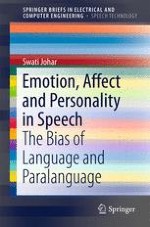2016 | OriginalPaper | Chapter
6. Where Speech Recognition Is Going: Conclusion and Future Scope
Author : Swati Johar
Published in: Emotion, Affect and Personality in Speech
Publisher: Springer International Publishing
Activate our intelligent search to find suitable subject content or patents.
Select sections of text to find matching patents with Artificial Intelligence. powered by
Select sections of text to find additional relevant content using AI-assisted search. powered by
